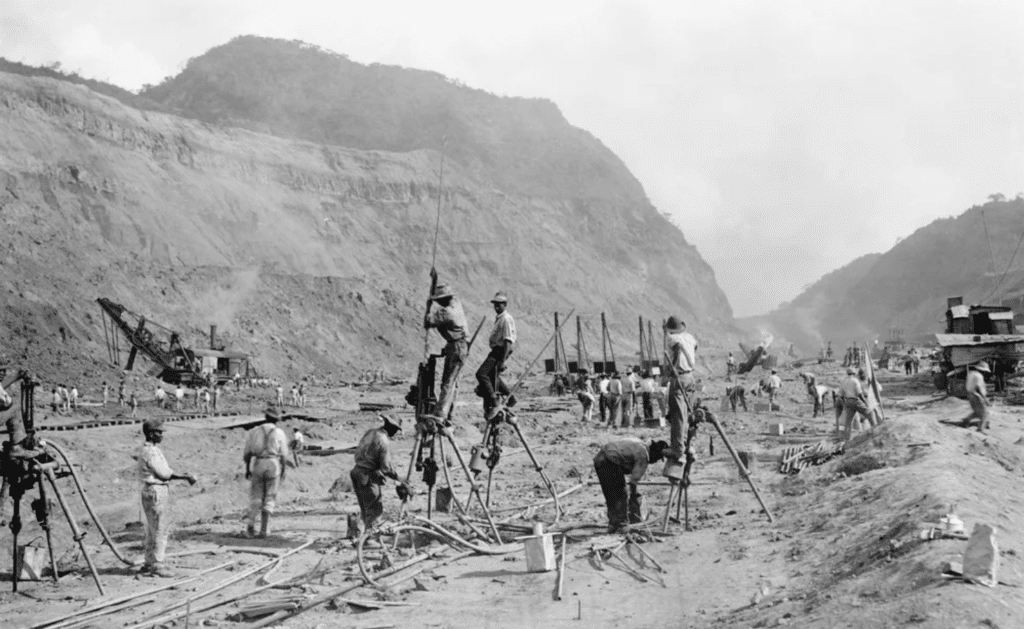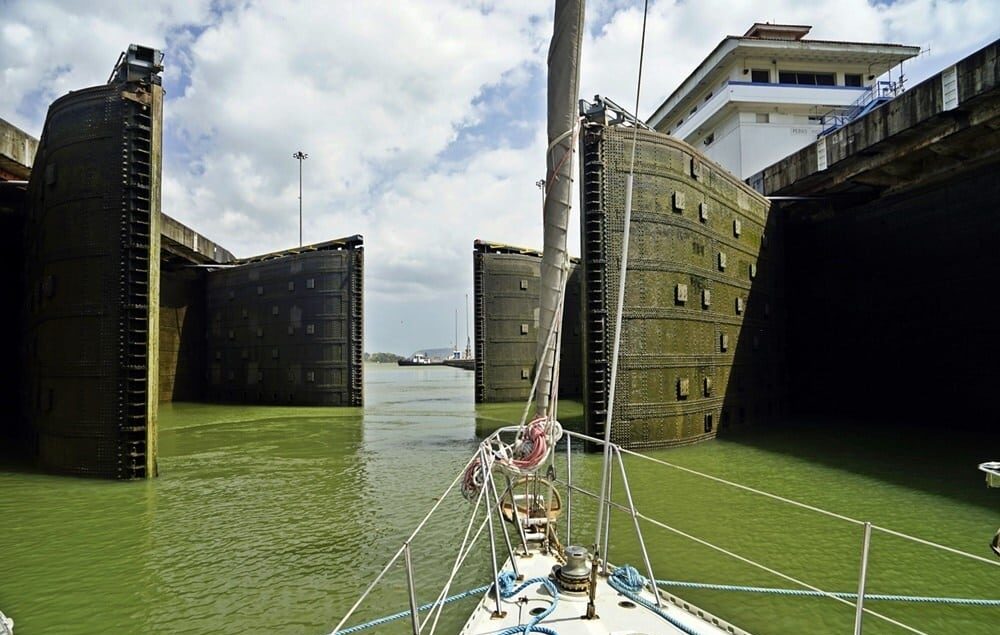HIGHLIGHTS
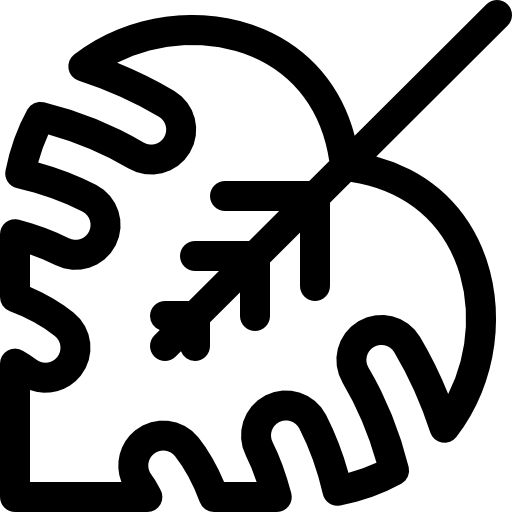




Get Your Bearings
The Panama Canal is 50 miles long from deep water in the Atlantic to deep water in the Pacific. It was cut through one of the narrowest and lowest saddles of the long, mountainous isthmus that joins the North and South American continents.
It requires about 8 to 10 hours for an average ship to transit the canal (not including a possible overnight anchorage in Gatun Lake). During this time, our Voyage Crew will have an opportunity to see one of the modern wonders of the world in operation and take an active part in our passage to the Pacific Ocean.
History of the Panama Canal
As early as 8000 BCE, the Isthmus of Panama was used as a transit route by prehistoric man migrating through Central America to settle in South America. It wasn’t until 1502, on his fourth voyage of exploration, that Christopher Columbus, sailing under the Spanish flag, arrived on the isthmus.
Spain began settlement of the isthmus in 1510, and in 1534, Charles V ordered the first survey for a proposed canal across the 50-mile-wide isthmus. A canal was beyond their capabilities, but the Spanish did pave mule trails with cobblestones to carry tons of gold moving back to Spain from the conquest of Peru. Vestiges of the Las Cruces trail can still be seen today.
In 1850, U.S. interests began construction of the Panama Railroad, just in time to make a fortune carrying gold-seekers on their way to California. They came to the isthmus by boat, crossed the isthmus, and continued on by boat.
In 1880, Ferdinand de Lesseps, fresh from his triumph building the Suez Canal, sold stock to millions of Frenchmen to finance the building of a canal in Panama. But the considerable skill of the French engineers was not enough to overcome the disease and geography they found on the isthmus or make up for the mismanagement in France that brought the enterprise to financial ruin before the end of the century.
In 1903, following Panama’s declaration of independence from Colombia, Panama and the United States entered into a treaty by which the United States undertook to construct an inter-oceanic ship canal across the isthmus. The following year the U.S. purchased the rights and equipment of the French Canal Interoceanique for $40 million and took over construction.
It took ten years, the labor of more than 75,000 men and women, and almost $400 million to complete the job. The builders of the canal faced unprecedented problems: tropical disease; the unusual geology of the isthmus that made landslides a constant hazard; the enormous size of the locks and volume of the excavation needed; and the need to establish whole new communities, to import every last nail, and to organize work on a scale never before seen.
The Canal opened to traffic on August 15, 1914; since that time, thousands of ships transit through the waterway every year.
What to Expect
Shelter Bay Marina, Colon (Atlantic Side)
This is a large, modern marina with many amenities including a hotel, pool, provisioning and laundry, as well as boat services for any work we need done prior to departure.
The marina grounds are part of an old navy base named Fort Sherman. There are many jungle trails we can hike among the fort ruins before we depart with a variety of animals to spot including capuchin and howler monkeys, sloths, and leaf cutter ants.
Knot Tying and Line Handling Training
When a sailboat enters a lock, someone onshore will throw messenger lines to us with a heavy weights at the end. We will have heavier dock lines ready on our boat to secure to the messenger line so the shore line handler can then easily retrieve the lines and help “walk” our boat into position within the lock and secure in place as the water raises and lowers.
We may also be tying up to other boats, so working as a team within our crew as well as the other’s boats crew is an important task. As Voyage Crew we will work on knot tying and line handling before departure so our crew can take an active part in this process.
Route
We begin our journey near Shelter Bay Marina in Colón. Before our departure we will have several tasks to complete including our official boat inspection, as well as provisioning and refueling if needed.
On our appointed day and time, we leave the marina to enter Limon Bay and briefly anchor while we wait for our canal-appointed Advisor to join us. They will assist us on the first leg of the journey through the first locks of the Panama Canal.
There are three locks which will take us to Gatun Lake. Each lock takes about 20 minutes to pass through and we are raised 85 feet above sea level to Lake Gautn. As we make our way through the locks we will most likely be rafting up with other similar sized boats and pass through as a single unit.
Depending on the time of day and the time slot we were assigned at our departure, we will either anchor overnight in Gatun Lake or continue on to the locks on the Pacific side.
At our next departure time we will be joined by another Canal Advisor to assist the second half of our trip. We will continue transiting 30 miles through Gatun Lake, make our way through the Culebra Cut which dissects the Continential Divide, and finally enter three more locks taking us back down 85 feet to sea level on the Pacific Ocean side of the canal.
This is will be Neverland’s first time touching Pacific waters!
We will finish our passage in Panama City, where we will have time to head ashore and explore the city.
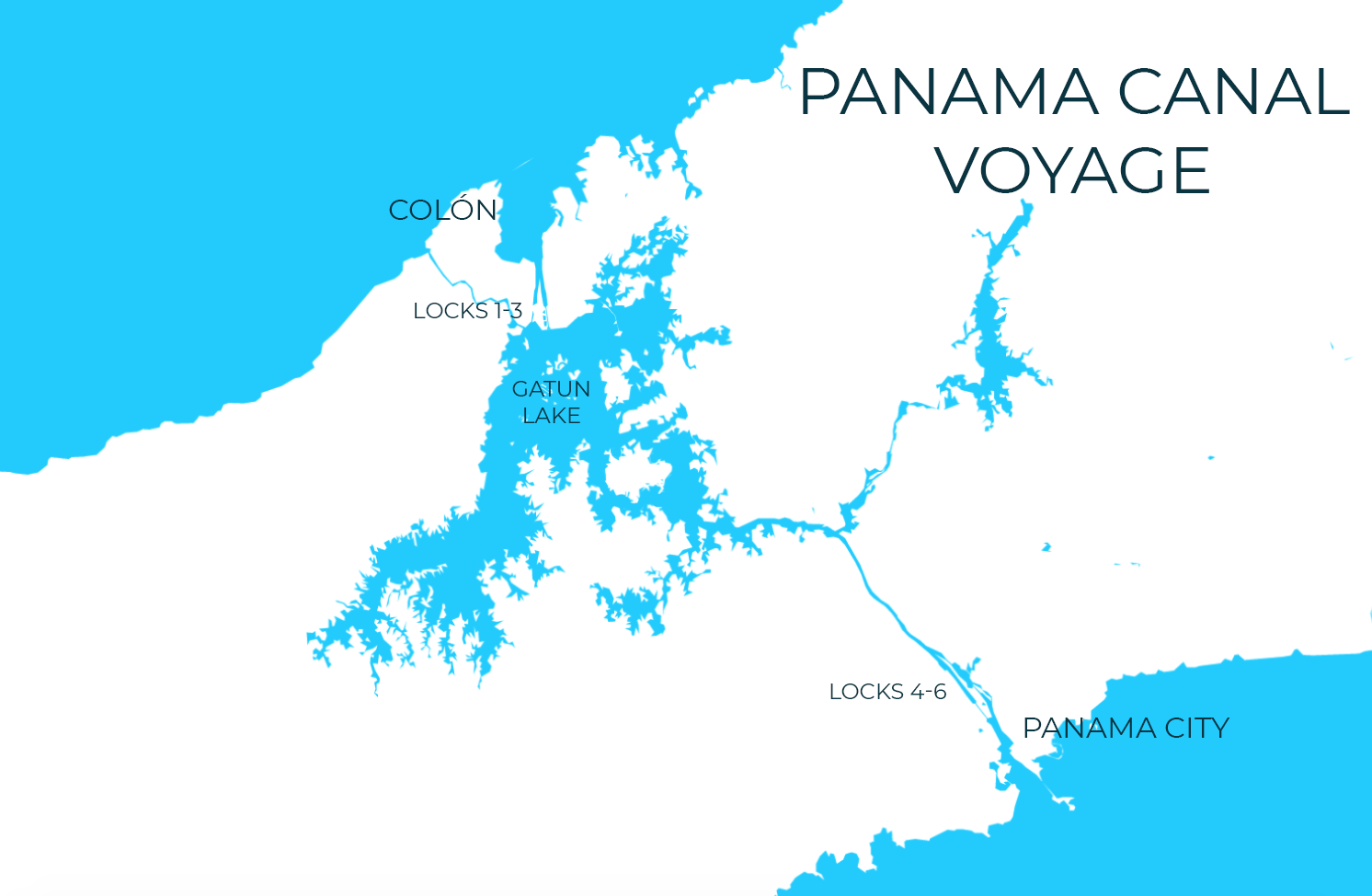
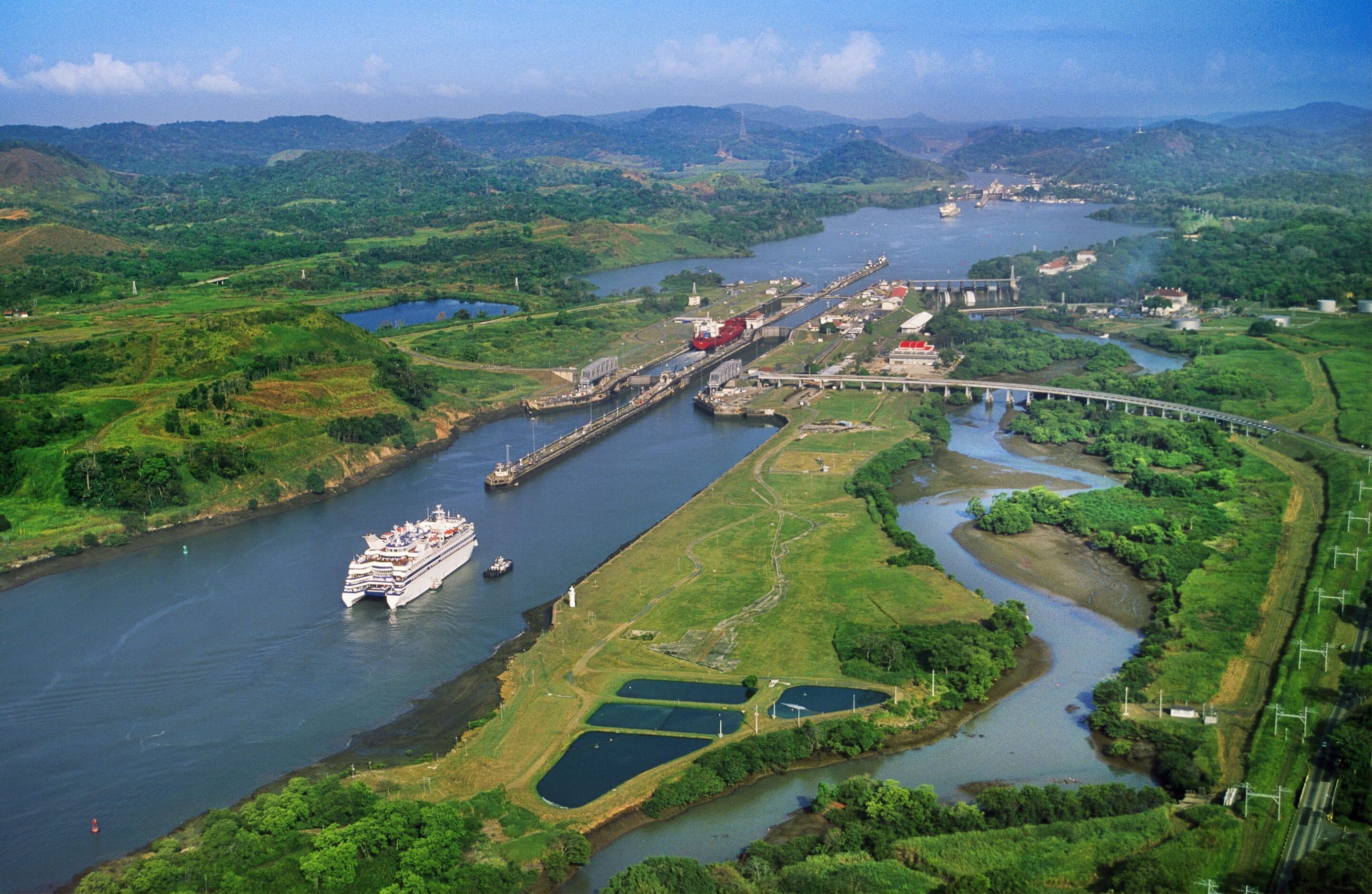
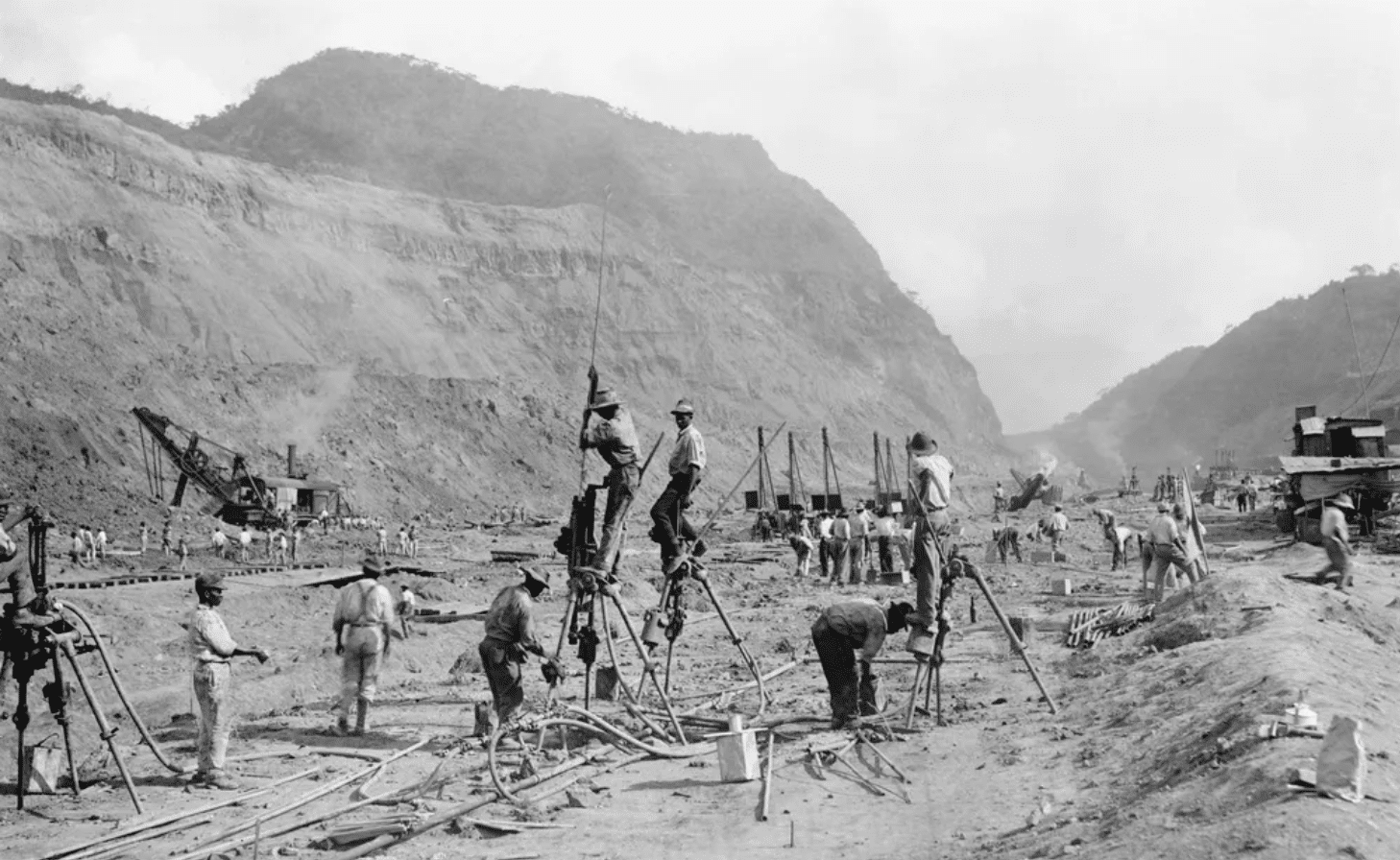
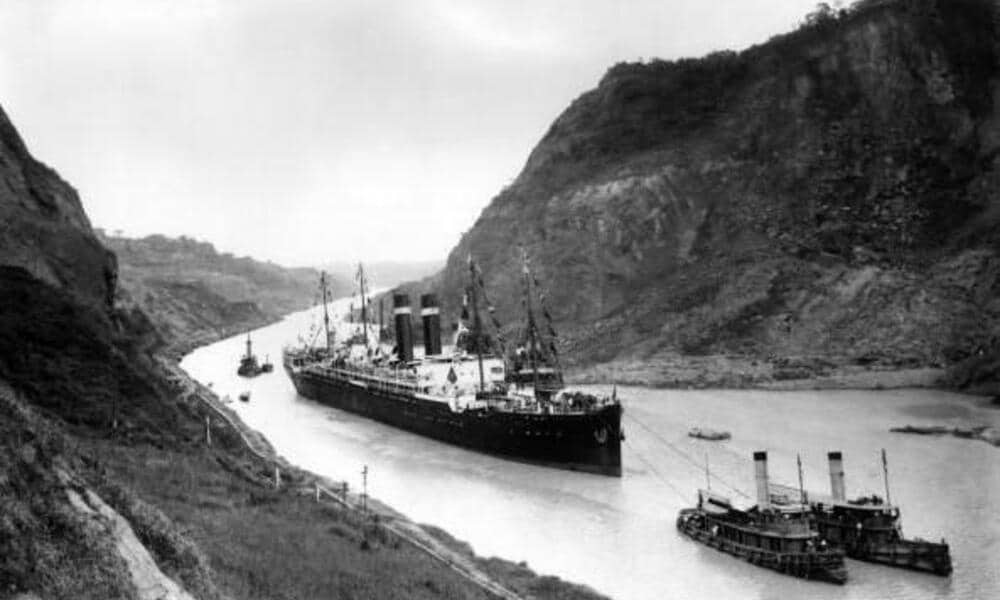
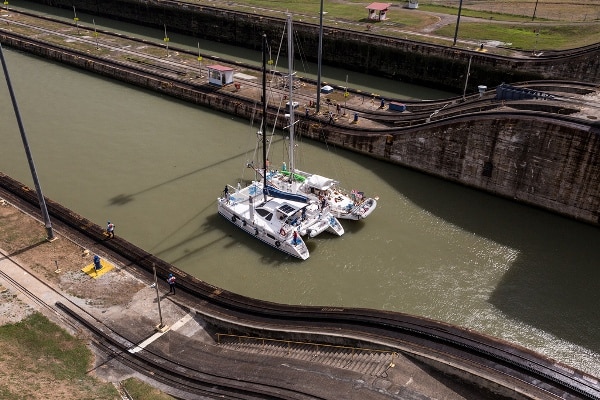
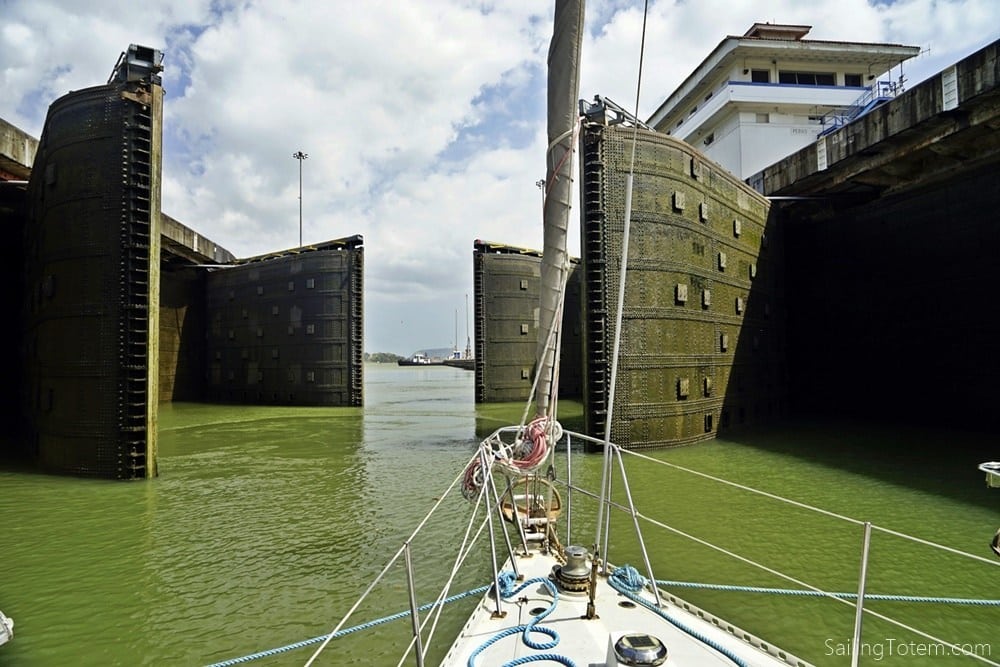
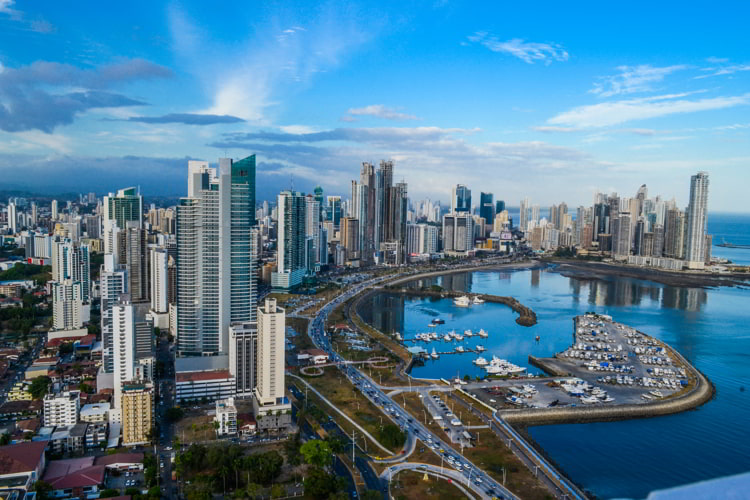

Get Your Bearings
The Panama Canal is 50 miles long from deep water in the Atlantic to deep water in the Pacific. It was cut through one of the narrowest and lowest saddles of the long, mountainous isthmus that joins the North and South American continents.
It requires about 8 to 10 hours for an average ship to transit the canal (not including a possible overnight anchorage in Gatun Lake). During this time, our Voyage Crew will have an opportunity to see one of the modern wonders of the world in operation and take an active part in our passage to the Pacific Ocean.

The History of The Panama Canal
As early as 8000 BCE, the Isthmus of Panama was used as a transit route by prehistoric man migrating through Central America to settle in South America. It wasn’t until 1502, on his fourth voyage of exploration, that Christopher Columbus, sailing under the Spanish flag, arrived on the isthmus.
Spain began settlement of the isthmus in 1510, and in 1534, Charles V ordered the first survey for a proposed canal across the 50-mile-wide isthmus. A canal was beyond their capabilities, but the Spanish did pave mule trails with cobblestones to carry tons of gold moving back to Spain from the conquest of Peru. Vestiges of the Las Cruces trail can still be seen today.
In 1850, U.S. interests began construction of the Panama Railroad, just in time to make a fortune carrying gold-seekers on their way to California. They came to the isthmus by boat, crossed the isthmus, and continued on by boat.
In 1880, Ferdinand de Lesseps, fresh from his triumph building the Suez Canal, sold stock to millions of Frenchmen to finance the building of a canal in Panama. But the considerable skill of the French engineers was not enough to overcome the disease and geography they found on the isthmus or make up for the mismanagement in France that brought the enterprise to financial ruin before the end of the century.
In 1903, following Panama’s declaration of independence from Colombia, Panama and the United States entered into a treaty by which the United States undertook to construct an inter-oceanic ship canal across the isthmus. The following year the U.S. purchased the rights and equipment of the French Canal Interoceanique for $40 million and took over construction.
It took ten years, the labor of more than 75,000 men and women, and almost $400 million to complete the job. The builders of the canal faced unprecedented problems: tropical disease; the unusual geology of the isthmus that made landslides a constant hazard; the enormous size of the locks and volume of the excavation needed; and the need to establish whole new communities, to import every last nail, and to organize work on a scale never before seen.
The Canal opened to traffic on August 15, 1914; since that time, thousands of ships transit through the waterway every year.
What To Expect
Shelter Bay Marina, Colon (Atlantic Side)
This is a large, modern marina with many amenities including a hotel, pool, provisioning and laundry, as well as boat services for any work we need done prior to departure.
The marina grounds are part of an old navy base named Fort Sherman. There are many jungle trails we can hike among the fort ruins before we depart with a variety of animals to spot including capuchin and howler monkeys, sloths, and leaf cutter ants.
Knot Tying and Line Handling Training
When a sailboat enters a lock, someone onshore will throw messenger lines to us with a heavy weights at the end. We will have heavier dock lines ready on our boat to secure to the messenger line so the shore line handler can then easily retrieve the lines and help “walk” our boat into position within the lock and secure in place as the water raises and lowers.
We may also be tying up to other boats, so working as a team within our crew as well as the other’s boats crew is an important task. As Voyage Crew we will work on knot tying and line handling before departure so our crew can take an active part in this process.
Route
We begin our journey near Shelter Bay Marina in Colón. Before our departure we will have several tasks to complete including our official boat inspection, as well as provisioning and refueling if needed.
On our appointed day and time, we leave the marina to enter Limon Bay and briefly anchor while we wait for our canal-appointed Advisor to join us. They will assist us on the first leg of the journey through the first locks of the Panama Canal.
There are three locks which will take us to Gatun Lake. Each lock takes about 20 minutes to pass through and we are raised 85 feet above sea level to Lake Gautn. As we make our way through the locks we will most likely be rafting up with other similar sized boats and pass through as a single unit.
Depending on the time of day and the time slot we were assigned at our departure, we will either anchor overnight in Gatun Lake or continue on to the locks on the Pacific side.
At our next departure time we will be joined by another Canal Advisor to assist the second half of our trip. We will continue transiting 30 miles through Gatun Lake, make our way through the Culebra Cut which dissects the Continential Divide, and finally enter three more locks taking us back down 85 feet to sea level on the Pacific Ocean side of the canal.
This is will be Neverland’s first time touching Pacific waters!
We will finish our passage in Panama City, where we will have time to head ashore and explore the city.
ACCOMMODATIONS
Accommodations include use of the following:
- 3 queen cabins, each with private ensuite bath with electric toilet, wash basin and separate shower stall. All cabins have ample storage, a panoramic window, air conditioning, two fans, US 110v outlets and dimmable recessed lighting.
- Social areas include an upper deck lounge with sectional couch and sunbed area with 360 degree view. Forward deck has spacious lounge area with adjustable reclining seating, trampoline and sunning areas. Aft deck offers lounge area plus alfresco dining. Salon offers lounge area with coffee table plus flat screen TV with many movies and USB capabilities.
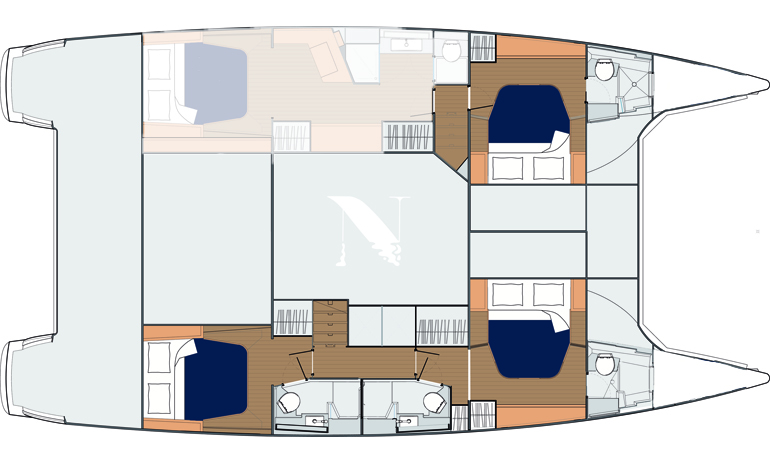
FYI
Currency:
The Panamanian balboa (PAB) is the national currency of the Republic of Panama, which circulates alongside the U.S. dollar (USD), to which the PAB is pegged (1:1)
Electricity: On board Neverland is US 110v. We have US-style and USB outlets in every room
Communications: Neverland has on board wi-fi with high speed internet
We’ve got you covered: bath & beach towels, bedding, shower essentials, ScubaPro snorkel & dive gear, and dive lights
What to bring: soft-sided luggage, swimwear, sunscreen, beachwear, rain jacket, hat, sunglasses, music, books, camera, and personal snorkel/dive gear and wetsuit if you prefer
NEVERLAND CRUISES LLC
+1.305.912.SAIL
SAIL@NEVERLAND.CRUISES
SOCIAL
CONTACT
Send us a message below with thoughts or questions. Visit the contact page to inquire about a trip on Neverland.

